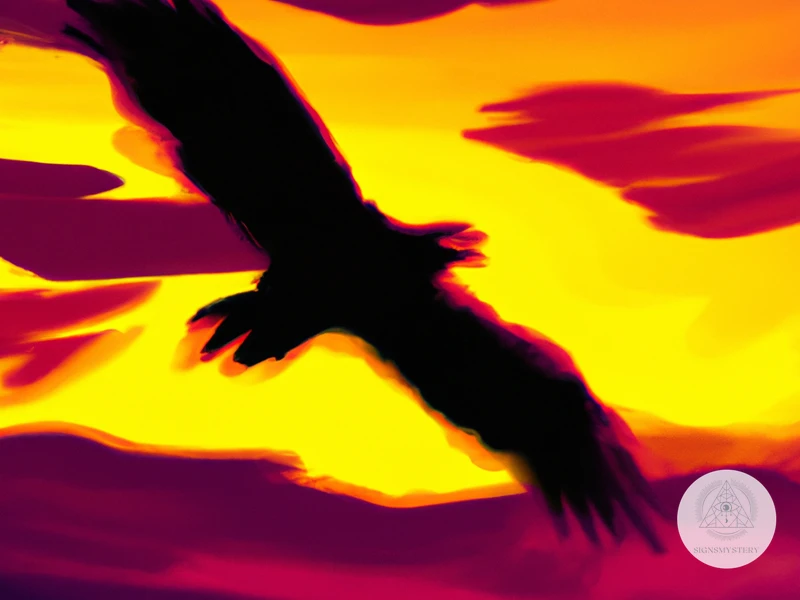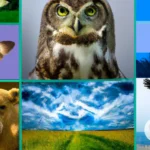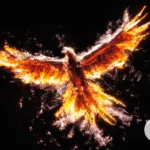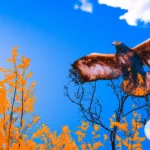Animals have long held a significant place in both art and literature, their symbolism captivating and intriguing audiences for centuries. From ancient cultures to the modern era, animal symbolism has played a crucial role in conveying deeper meanings and emotions. The power of animal symbolism is evident in the way it can evoke feelings, depict human qualities, and reveal profound truths about the human condition. In this article, we will explore the rich history and origins of animal symbolism, examine its influence on various forms of art and literature, and delve into its significance in contemporary works. Join us on a journey through the fascinating world of animal symbolism and discover the captivating ways in which it has shaped our artistic and literary experiences.
The Origins of Animal Symbolism
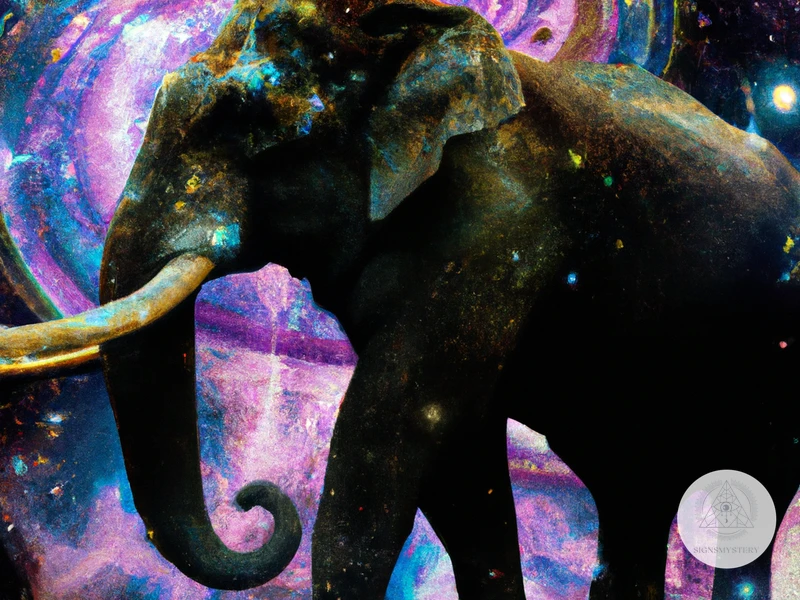
The origins of animal symbolism can be traced back to ancient cultures that recognized the significance of the natural world and its connection to human life. In these early societies, animals held a sacred and mysterious presence, and their attributes and behaviors were closely observed and interpreted. One such culture was the ancient Egyptians, who associated certain animals with specific deities and believed that these animals possessed divine qualities. For example, the lion symbolized strength and royalty, while the ibis bird represented wisdom and knowledge. Similarly, in Native American cultures, animals were revered as spirit guides and totems, with each animal carrying unique qualities and teachings. The bear symbolized strength and introspection, the eagle represented courage and vision, and the wolf embodied loyalty and unity. These ancient beliefs formed the foundation for the symbolism of animals, laying the groundwork for their representation in art and literature throughout history. By understanding the spiritual and symbolic significance of animals, we gain insight into the universal language that transcends cultures and speaks directly to the human soul.
Ancient Cultures and Animal Symbolism
In ancient cultures, animal symbolism held a profound significance and played a central role in their belief systems and daily lives. The Egyptians, for example, incorporated animal symbolism into their religious practices. The sacred animals were believed to be the earthly manifestations of gods and goddesses, and their attributes were seen as divine qualities. The worship of the lion-headed goddess Sekhmet represented power and protection, while the ibis-headed god Thoth symbolized wisdom and writing. Similarly, in ancient Greece, animals were associated with various gods and goddesses. The owl was linked to Athena, the goddess of wisdom, while the serpent was connected to Asclepius, the god of healing. These animal symbols not only represented specific deities but also embodied the qualities and traits associated with them. In many cases, animals were seen as mediators between the human realm and the divine, and their symbolism served as a visual language for communicating spiritual concepts. This deep connection between animals and ancient cultures can still be felt and explored in modern times, offering a glimpse into the profound wisdom and reverence that our ancestors had for the animal kingdom.
The Renaissance and Animal Symbolism
During the Renaissance, animal symbolism continued to play a significant role in art, reflecting the renewed interest in humanism and the natural world. Artists of this period used animals as powerful metaphors and symbols to convey complex ideas and emotions. Here are a few examples of the ways in which animal symbolism manifested during the Renaissance:
1. Birds: Birds were commonly used to represent spiritual and divine qualities. The dove, for instance, symbolized peace and the Holy Spirit in Christian art. In paintings such as “The Annunciation” by Fra Angelico and “The Arnolfini Portrait” by Jan van Eyck, the presence of a dove signifies the sacred nature of the scene.
2. Lions: Lions were known for their strength and majesty, often representing power and authority. They were frequently depicted as guardians in religious art and were seen as symbols of kingship and nobility. Leonardo da Vinci’s “Study of Lion’s Paw” showcases his meticulous observations and fascination with the animal’s anatomy.
3. Snakes: Snakes carried various symbolic meanings in Renaissance art. They were commonly associated with temptation, sin, and the Fall of Man due to their portrayal in the biblical story of Adam and Eve. Paintings such as Sandro Botticelli’s “The Fall of Man” depict the snake as a cunning and deceptive creature.
4. Butterflies: Butterflies were seen as symbols of transformation and the fleeting nature of life. Artists like Hieronymus Bosch incorporated butterflies into their works to convey the fragility and ephemeral beauty of existence.
In the Renaissance period, animal symbolism served as a visual language that allowed artists to communicate complex ideas and emotions with subtlety and depth. By incorporating animals into their works, artists added layers of meaning that transcended the surface level, inviting viewers to engage in deeper contemplation and interpretation. This integration of animal symbolism contributed to the richness and complexity of Renaissance art, leaving a lasting impact on the artistic landscape of the time.
The Power of Animal Symbolism in Art
The power of animal symbolism in art lies in its ability to evoke emotions, convey deeper meanings, and create a profound connection between the viewer and the artwork. Animals have been depicted in paintings throughout history, with each animal carrying its own symbolism and significance. In Renaissance art, for example, animals were often used as allegorical representations of human virtues and vices. Paintings such as “The Garden of Earthly Delights” by Hieronymus Bosch feature fantastical creatures and animals that symbolize sins and moral lessons. In addition to paintings, sculptures have also utilized animal symbolism to communicate ideas and stories. One notable example is the ancient Egyptian Sphinx, which combines the body of a lion with the head of a human, representing strength, wisdom, and divine authority. These artistic representations not only showcase the skill and creativity of the artists, but also tap into the universal language of symbolism, allowing viewers to interpret and connect with the artwork on a deeper level. By incorporating animal symbolism into art, artists are able to transcend the literal and invite viewers to explore the depths of human experience and spirituality. Whether it’s a fierce lion representing bravery or a delicate butterfly symbolizing transformation, the power of animal symbolism in art is undeniable and continues to captivate audiences to this day.
Animal Symbolism in Paintings
Animal symbolism in paintings is a prominent aspect of artistic expression throughout history. Artists have employed various animals as symbols to convey deeper meanings and evoke emotions in their work. For instance, the serpent, often depicted in biblical paintings, represents temptation and evil. In contrast, the dove symbolizes peace and purity, commonly seen in religious artworks. The use of animals in paintings also extends beyond religious symbolism. Artists have utilized animals to symbolize human emotions and characteristics. The cunning fox represents deceit, while the loyal and protective dog embodies devotion. Additionally, animals can be symbolic of social, political, or cultural commentary, such as the use of the bull in Picasso’s “Guernica” to symbolize the horrors of war. These paintings demonstrate the power of animal symbolism in capturing the essence of complex ideas and providing visual narratives that resonate with audiences. The use of animal symbolism in paintings continues to be a significant tool for artists to communicate their messages and provoke thought among viewers.
Animal Symbolism in Sculptures
Animal symbolism in sculptures has been a prominent feature in the world of art for centuries. Sculptors have used animals as subjects to convey various symbolic meanings and messages. One notable example is the representation of lions in sculptures, which often symbolize power, strength, and leadership. In ancient Mesopotamia, lion sculptures adorned the entrances of important buildings, acting as guardians and protectors. The Sphinx in Egypt with its lion’s body and human head is another well-known example of animal symbolism in sculpture. It represents wisdom and the enigma of life. Birds, such as eagles and owls, frequently appear in sculptures as symbols of intellect, wisdom, and foresight. In Greek and Roman mythologies, the eagle was associated with Zeus and Jupiter, symbolizing their power and authority. Additionally, sculptures featuring serpents often symbolize transformation and rebirth, referencing the shedding of the snake’s skin as a metaphor for personal growth and renewal. Animal symbolism in sculptures allows artists to communicate profound ideas and emotions through the physical representation of animals. The use of different materials, such as stone or bronze, adds to the aesthetics and longevity of these sculptures, ensuring that their symbolic messages endure throughout time.
The Role of Animal Symbolism in Literature
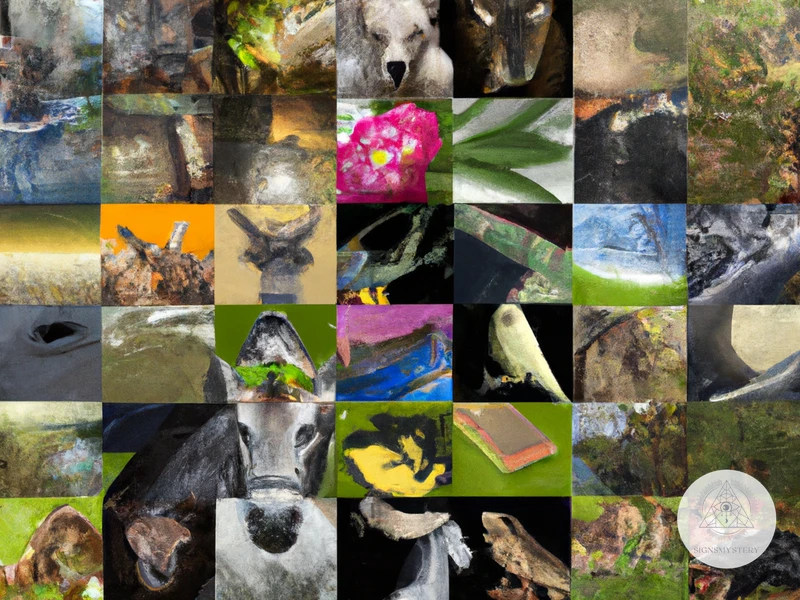
The role of animal symbolism in literature is profound, as authors utilize animal archetypes to convey complex meanings and themes. Animals often embody certain characteristics or qualities that can enhance the portrayal of human emotions and experiences. In mythical literature, creatures like dragons and unicorns represent power and purity, respectively, while in fables and fairy tales, animals like the tortoise and the hare symbolize patience and perseverance. Animal symbolism can also be used to explore the human-animal relationship and the ethical implications of our treatment of animals. For example, George Orwell’s “Animal Farm” uses different animals to represent political ideologies and societal structures. Additionally, animal symbolism can serve as a metaphor for human desires, fears, and instincts. In “Moby-Dick” by Herman Melville, the white whale becomes a symbol of obsession and the destructive nature of unchecked ambition. By employing animal symbolism, authors are able to tap into universal imagery and evoke powerful emotions, offering readers a deeper understanding of the human condition through the lens of the natural world.
Mythical Creatures and their Symbolism
Mythical creatures have long captured the imagination of artists and writers, their symbolism representing a fusion of human and animal qualities and embodying fantastical realms beyond our own. One such creature is the phoenix, a mythical bird associated with resurrection and rebirth. The phoenix, often depicted with vibrant plumage and fiery wings, represents the cycle of life, death, and renewal. It represents the transformative power of overcoming challenges and emerging stronger. Another mythical creature is the dragon, which has diverse symbolic meanings across different cultures. In Chinese culture, the dragon symbolizes power, strength, and good fortune, while in Western folklore, it is often associated with danger and destruction. The unicorn, a legendary creature with a single horn, is often seen as a symbol of purity, grace, and enchantment. Its elusive nature and fantastical beauty make it a popular subject in art and literature. Other mythical creatures like griffins, centaurs, and mermaids also hold unique symbolism, representing a blend of human and animal qualities and often embodying virtues or vices. Their presence in art and literature adds an element of mystique and wonder, transporting audiences to magical realms beyond the ordinary. Whether they are depicted as protectors, harbingers of doom, or embodiments of desire, mythical creatures offer a rich tapestry of symbolism that continues to inspire and captivate generations.
Animal Archetypes and their Meanings
Animal archetypes have been a recurring theme throughout history, representing specific qualities and characteristics that resonate with human experiences and emotions. These archetypes serve as universal symbols, transcending cultural boundaries and providing a shared understanding of their meanings. Here are a few examples of animal archetypes and their associated meanings:
1. The Lion: Known as the king of the animal kingdom, the lion symbolizes power, courage, and leadership. It represents strength, assertiveness, and the ability to overcome challenges.
2. The Owl: Often associated with wisdom and knowledge, the owl archetype signifies intuition, insight, and the ability to see beyond the surface. It represents deep understanding and the power of observation.
3. The Butterfly: Symbolizing transformation and rebirth, the butterfly archetype represents change, growth, and the journey of self-discovery. It signifies the importance of embracing new beginnings and letting go of the past.
4. The Wolf: Recognized for its pack mentality, the wolf archetype embodies loyalty, unity, and the importance of community. It symbolizes the strength of social connections and the power of working together to achieve common goals.
5. The Dolphin: A well-known symbol of harmony and playfulness, the dolphin archetype represents joy, compassion, and emotional intelligence. It symbolizes the importance of connection, communication, and living in harmony with others.
These are just a few examples of the vast array of animal archetypes and their meanings. Each archetype carries its own unique symbolism and can be interpreted differently across various cultures and belief systems. By exploring the depths of these archetypes, we gain a deeper understanding of ourselves and the world around us, drawing upon the wisdom and lessons embedded within these ancient symbols. (Source: Sacred Space Décor: Perfect Balance)
The Influence of Animal Symbolism in Fables and Fairy Tales
The influence of animal symbolism in fables and fairy tales is pervasive and profound. These timeless stories often use animals as characters to convey valuable life lessons and moral teachings to readers of all ages. Animal characters in fables and fairy tales are typically anthropomorphized, taking on human characteristics and behaviors while retaining their innate animal qualities. This unique blend allows for deeper symbolism and metaphorical representation. For instance, the cunning fox is commonly portrayed as a sly and deceitful character, teaching us to be wary of deception and to trust our instincts. The wise owl, with its association with wisdom, imparts valuable knowledge and guidance to the protagonist. The transformation of the frog into a prince symbolizes inner beauty and the potential for change. These animal symbols allow readers to explore complex themes such as bravery, loyalty, kindness, and the consequences of one’s actions. Through fables and fairy tales, animal symbolism becomes a powerful tool for imparting moral values and life lessons in an accessible and engaging format. It ignites the imagination and sparks curiosity, leaving a lasting impression on readers long after the story has ended.
Please visit our article on the role of Dreamtime stories in Australian Aboriginal totems to further explore the cultural significance of animal symbolism in storytelling.
The Significance of Animal Symbolism in Modern Art and Literature
The significance of animal symbolism in modern art and literature continues to captivate and inspire audiences. In the realm of art, contemporary artists explore the depth and complexity of human existence through the use of animals as symbolic elements. They employ animals as a means to express emotions, convey social commentary, and challenge conventional ideas. For example, artist Damien Hirst’s iconic
Subscribe to Our Newsletter
Sign up to receive the latest news and updates.
Contemporary Artists and Animal Symbolism
Contemporary artists continue to explore and utilize animal symbolism in their works, infusing their artwork with deep meaning and thought-provoking narratives. One such artist is Lisa Ericson, who skillfully combines realistic animal portraits with fantastical elements to convey emotional and environmental messages. In her series titled “Stranger Than Earth,” Ericson paints hybrid creatures such as the “Panda Cap” (a mix of a panda and red-capped mushroom) or the “Elephantopus” (an elephant and octopus hybrid), highlighting the delicate balance between nature and human intervention. Through these imaginative creations, Ericson prompts viewers to contemplate the impact of human actions on the natural world and the intricacies of interdependent ecosystems. Another contemporary artist, Angela Hernandez, explores animal symbolism through intricate illustrations and mixed media techniques. Her artwork often depicts animals adorned with symbolic elements, such as flowers, feathers, and celestial motifs. Hernandez’s artistic style and symbolism serve as a commentary on the interconnectivity between humans, animals, and the environment. By incorporating animal symbolism into their works, contemporary artists amplify the power of their artistic expression and engage viewers in meaningful dialogues about our relationship with the natural world.
Modern Literature and Animal Symbolism
In modern literature, animal symbolism continues to be a powerful tool for conveying complex emotions, exploring deeper themes, and illuminating the human experience. Many writers use animal characters or employ animal symbolism to add depth and layers to their storytelling. One notable example is George Orwell’s dystopian novel “Animal Farm,” where farm animals represent different political ideologies and social hierarchies, reflecting the corruption and power dynamics of society. Another renowned work is Yann Martel’s “Life of Pi,” where the protagonist’s journey is intertwined with the symbolism of a tiger, representing both the fierce survival instinct and the primal forces within ourselves. Animal symbolism allows authors to tap into the instinctual and primal aspects of human nature, providing a metaphorical language that resonates with readers on a deeper level. By giving animals human-like qualities and using them as metaphors, authors can explore complex themes such as identity, morality, and the innate wildness that exists within all of us. This use of animal symbolism in modern literature adds richness and complexity to the narratives, inviting readers to reflect on their own humanity and the intricate connections between humans and the natural world.
Impact on the Audience
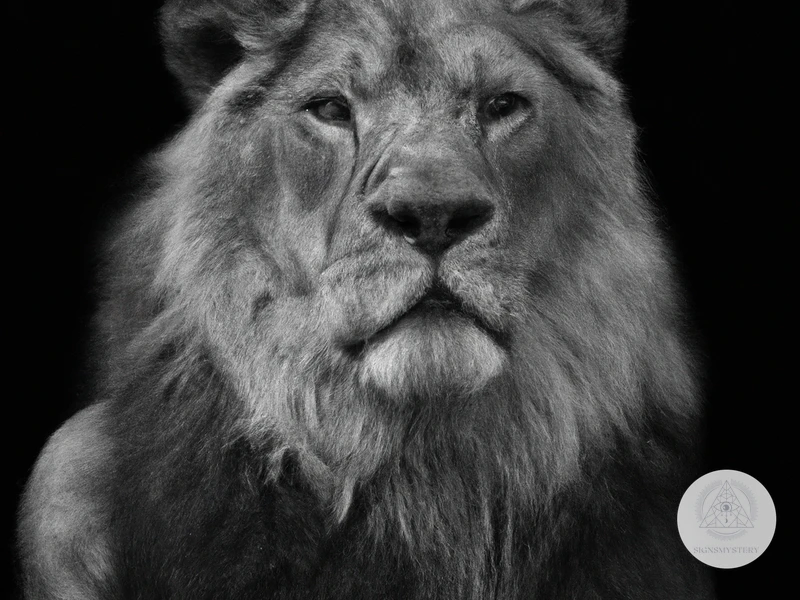
The use of animal symbolism in art and literature has a profound impact on the audience. It allows individuals to connect with and interpret the work on a deeper, more personal level. Animal symbolism can evoke a range of emotions and associations, tapping into the collective unconscious and sparking the imagination. When viewers or readers encounter animal symbolism, it often elicits a sense of familiarity, as these archetypal representations resonate with universal human experiences and instincts. Animal symbolism can serve as a powerful means of communication, transcending language barriers and cultural differences. Whether it’s a painting depicting a powerful lion or a novel featuring a wise owl, these animal symbols speak to our innermost thoughts, desires, and fears. They provide a lens through which we can explore our own identities and understand the world around us. Animal symbolism invites contemplation and invites us to reflect on our place in the natural order of things. It encourages introspection, connection with nature, and a deeper understanding of ourselves. The impact of animal symbolism on the audience is both immediate and lasting, leaving a lasting impression that lingers long after the encounter with the artwork or literary work has ended.
Conclusion
In conclusion, the influence of animal symbolism in art and literature is undeniable. Throughout history, animals have served as powerful metaphors, embodying human qualities, emotions, and spiritual meanings. From ancient cultures to the modern era, artists and writers have utilized animal symbolism to convey deeper messages, evoke emotions, and provoke thought. The rich history of animal symbolism can be seen in the ancient cultures that revered certain animals as sacred and connected them to divine qualities. The Renaissance period further emphasized the importance of animals in art, exploring their symbolic representation in paintings and sculptures. In literature, animal symbolism continues to thrive, with mythical creatures and archetypes adding depth and meaning to stories. Even in contemporary works, artists and writers incorporate animal symbolism to create impactful and thought-provoking pieces. The significance of animal symbolism extends beyond artistic and literary realms, resonating with audiences on a deeply personal level. These symbols evoke emotions, spark imagination, and invite introspection. As we continue to explore and appreciate animal symbolism, we gain a greater understanding of ourselves and the world around us. It is through the power of animal symbolism that we can connect with our own inner nature, align our energies, and find balance and harmony in our lives.
Frequently Asked Questions
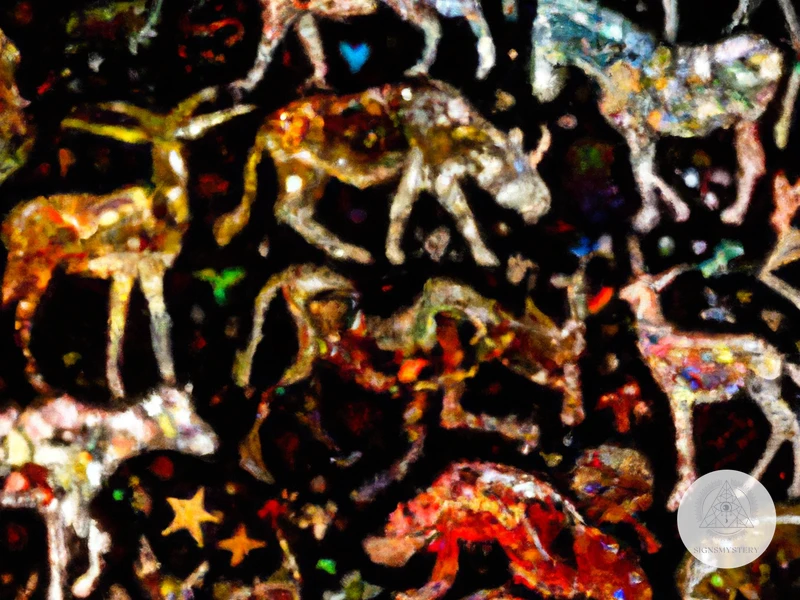
1. What is animal symbolism?
Animal symbolism refers to the use of animals to represent or convey deeper meanings and concepts in various forms of art and literature. Animals are chosen for their inherent qualities, behaviors, and cultural associations that hold symbolic significance.
2. Why are animals often depicted in art and literature?
Animals have always been a source of fascination for humans. They possess a certain mystique and symbolism that allows artists and writers to explore complex themes, emotions, and ideas in a relatable and visually engaging manner.
3. How do ancient cultures view animal symbolism?
Ancient cultures, such as the Egyptians and Native Americans, believed animals to be sacred and interconnected with the spiritual realm. Animals were associated with deities, served as spirit guides, or represented certain virtues and qualities.
4. What role does animal symbolism play in religious and mythological stories?
Animal symbolism often plays a significant role in religious and mythological stories, acting as a metaphor for divine qualities, moral teachings, or spiritual lessons. These stories use animals as allegories to convey complex ideas in a more accessible way.
5. How is animal symbolism portrayed in visual art?
Animal symbolism in visual art can be depicted through various techniques such as the choice of animal subjects, their poses, interactions, or the use of specific colors and compositions. These elements work together to convey the intended symbolic meaning.
6. Can animals symbolize different things in different cultures?
Yes, animal symbolism can vary across different cultures. While some animals may have universal symbols, such as the lion representing strength, other interpretations can differ based on cultural beliefs, traditions, and local folklore.
7. Do animals represent specific emotions or human traits in literature?
Absolutely! Animals are often used in literature to symbolize specific emotions, character traits, or aspects of human nature. For example, a cunning fox might represent slyness or deceit, while a gentle dove could symbolize peace and innocence.
8. How has animal symbolism evolved over time?
Animal symbolism has evolved as society and its values have changed. Modern interpretations often reflect contemporary beliefs and concerns. Animals may be used to explore environmental issues, represent social hierarchies, or challenge traditional notions.
9. Can animal symbolism be subjective?
Yes, to some extent, animal symbolism can be subjective. While certain symbols have established meanings, personal experiences, cultural backgrounds, and individual interpretations can influence how individuals perceive and relate to animal symbolism.
10. Is animal symbolism limited to art and literature?
No, animal symbolism extends beyond art and literature. It can also be found in religious rituals, cultural practices, and even in everyday expressions and idioms that reference animal attributes or behaviors.
References
- Decoding Animals in Art History, From Immortal Peacocks …
- Animal Symbolism in Roman Art
- //THE PRESENCE OF ANIMALS IN CONTEMPORARY …
Frequently Asked Questions

1. How did animal symbolism evolve in ancient cultures?
Animal symbolism in ancient cultures evolved as a means to understand and interpret the world around them. Animals were often associated with specific traits, qualities, and characteristics that humans admired or aspired to emulate.
2. What is the significance of animal symbolism in Renaissance art?
In Renaissance art, animals were frequently depicted as symbols of strength, wisdom, and various virtues. Artists used animal symbolism to convey deeper meanings and messages in their works, subtly communicating ideas and emotions.
3. Can you provide examples of animal symbolism in paintings?
Certain animals like the lion, which represented courage and power, or the dove, symbolizing peace and purity, were commonly depicted in paintings. Artists used these symbols to enhance the narrative or meaning of their artwork.
4. How did animal symbolism manifest in sculptures?
In sculptures, animal symbolism often took the form of mythological creatures or creatures representing specific virtues. For instance, the griffin, a mythical creature with the body of a lion and the head and wings of an eagle, symbolized nobility and vigilance.
5. What is the significance of mythical creatures in literature?
Mythical creatures in literature hold profound symbolism, representing various human emotions, desires, and beliefs. They often serve as metaphors for the human condition, offering insights into the complexities of our world and our own nature.
6. What are animal archetypes and what do they symbolize?
Animal archetypes are recurring symbolic patterns present in literature and art. Each archetype embodies specific qualities and meanings, such as the cunning fox representing slyness or the wise owl symbolizing wisdom and insight.
7. How does animal symbolism contribute to fables and fairy tales?
Animal symbolism plays a vital role in fables and fairy tales, where animals often serve as anthropomorphic characters teaching moral lessons or conveying cultural and societal norms. The use of animals allows authors to discuss sensitive or complex topics in a more accessible and relatable manner.
8. Which contemporary artists are known for their use of animal symbolism?
Contemporary artists like Damien Hirst and Banksy have incorporated animal symbolism into their works. Hirst’s famous shark exhibited in formaldehyde explores themes of life and death, while Banksy’s stenciled rats represent rebellion and urban life.
9. How does modern literature incorporate animal symbolism?
In modern literature, animal symbolism is often used to depict characters or situations metaphorically. For example, a protagonist facing a moral dilemma might encounter a serpent, representing temptation or deceit.
10. How does animal symbolism impact the audience?
Animal symbolism has the power to evoke emotional responses, provoke thought, and create a deeper connection between the audience and the artwork or literature. It allows individuals to tap into their own associations and interpretations, adding layers of meaning to the creative work.

